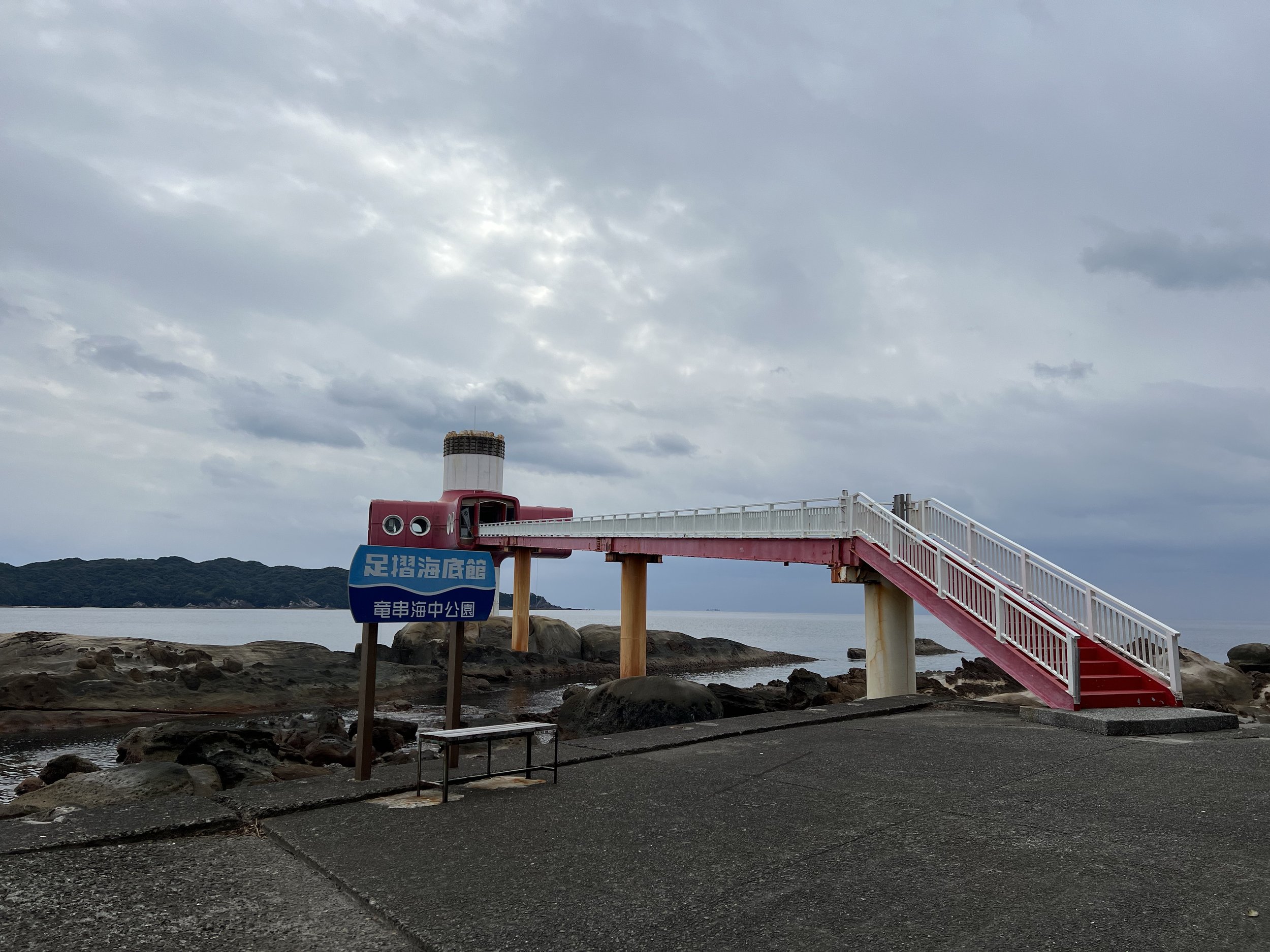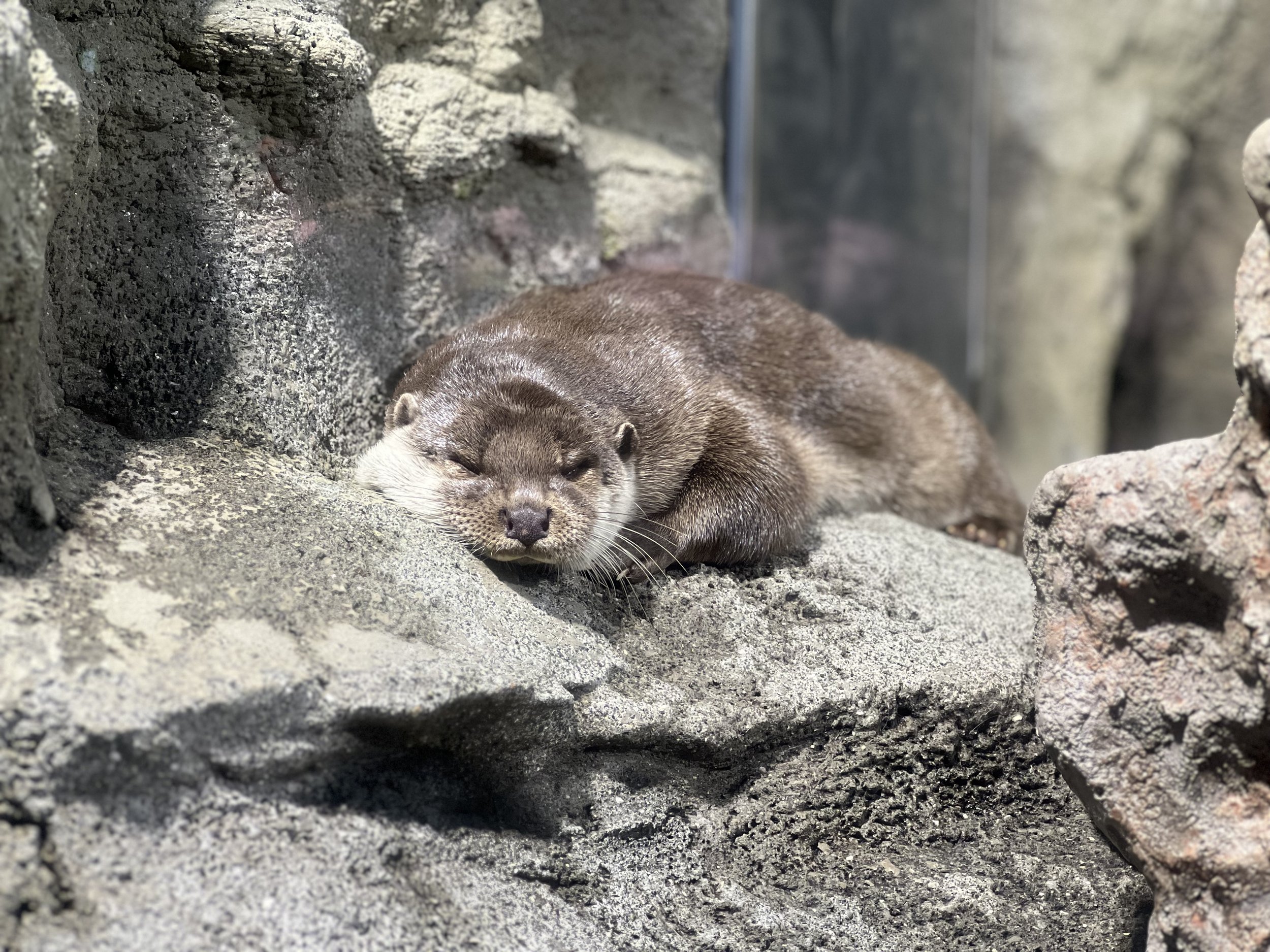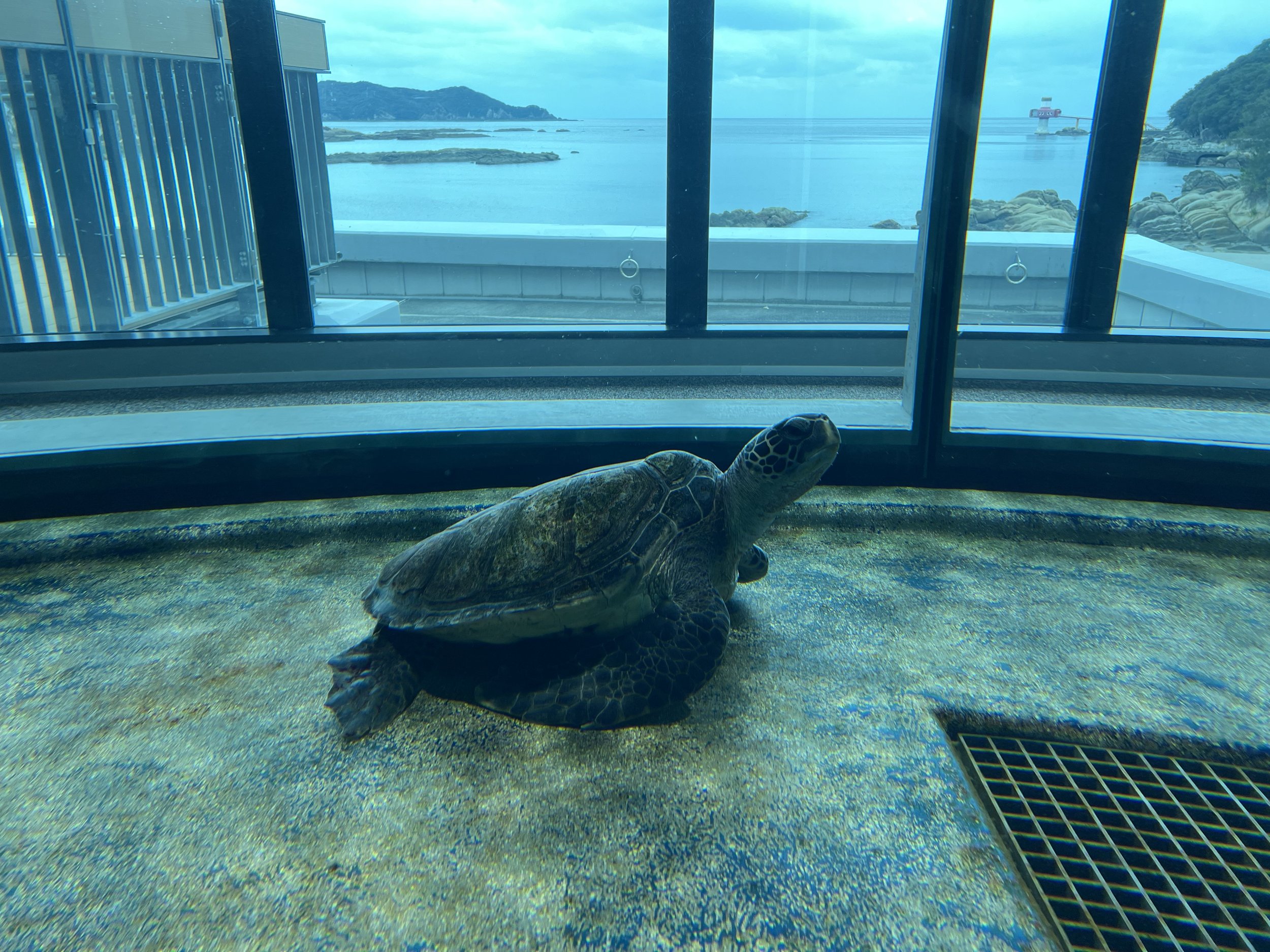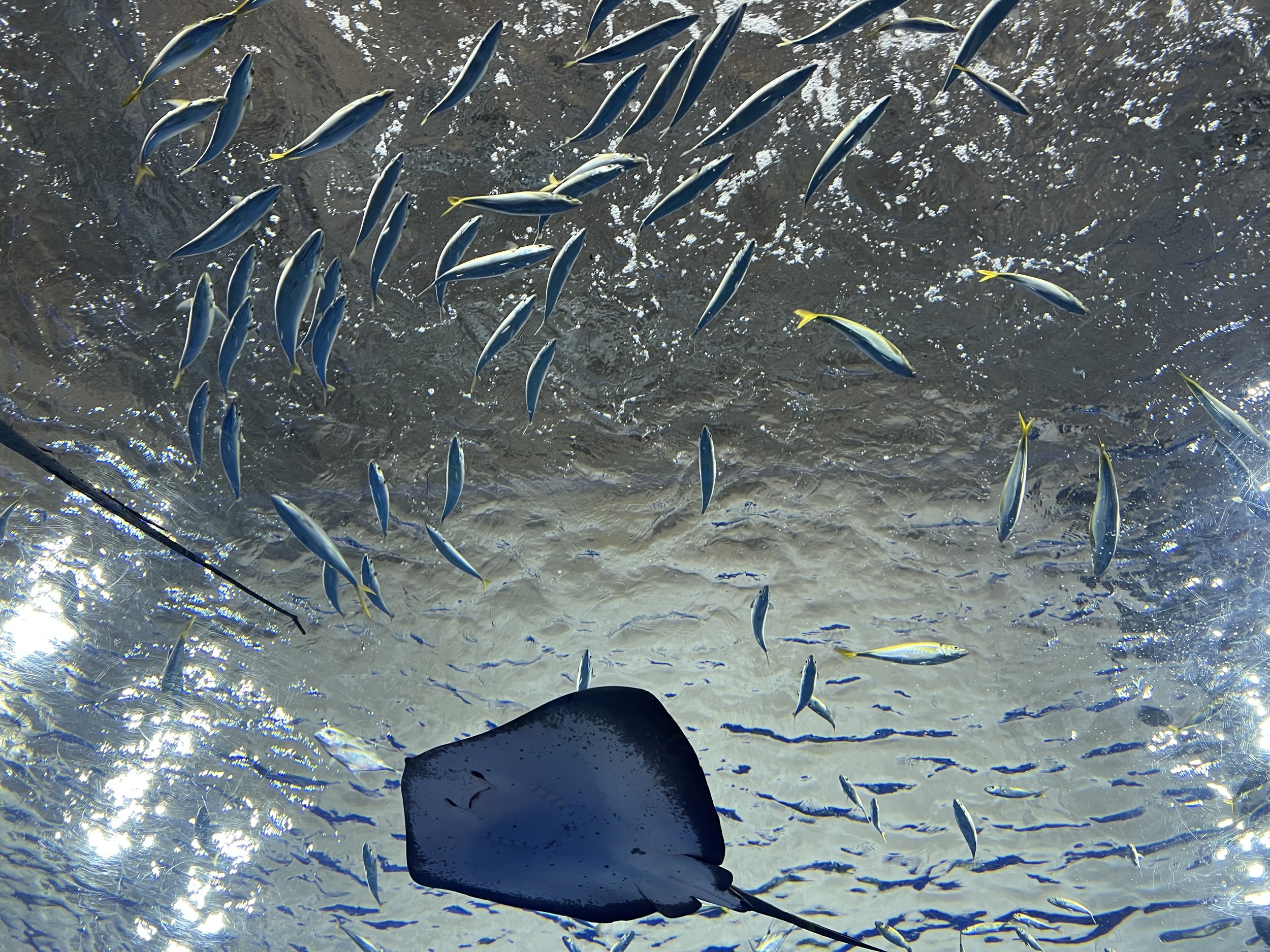Tosashimizu - Kochi, Japan
After spending a relaxing day walking a small section of the Shikoku Henro in the Cape Ashizuri area, I set out for Kochi City today. The trip takes about three hours and twenty minutes, but before leaving, I decided to visit both the Ashizuri Underwater Aquarium and the Kochi Prefectural Ashizuri Aquarium. From Cape Ashizuri, it took two buses to reach the underwater aquarium. There were a few spots I wanted to see in the area, but this was the one I was most excited about.
From the bus stop, I could already see the entrance to the underwater aquarium. The short walk there was scenic, lined with fascinating coastal rock formations—one even resembled a whale. At the entrance, the staff asked if I wanted a 3-in-1 combo ticket. Although one of the attractions, the glass-bottomed boat tour, was closed for maintenance, the two aquariums were open. Since one attraction was closed, the combo ticket was discounted and offered much better value than buying individual tickets.
Heading down the stairs, I entered a small, submarine-like chamber with round windows offering views of coral and marine life. The water wasn’t crystal clear, but visibility was good enough to watch fish and corals swaying gently with the current. I stayed for a while, just watching the fish glide past. I learned that different seasons bring different sea life, and visitors sometimes spot sea turtles or stingrays.
Next, I walked about twelve minutes to the Kochi Prefectural Ashizuri Aquarium. I showed my combo ticket at the entrance, and the staff exchanged it for an admission ticket. Renovated and reopened in 2020, the facility felt bright and modern. Inside were otters, sea turtles, sharks, manta rays, and more. There weren’t many visitors that day, and I had most of the exhibits to myself. I happened to visit during the deep-sea fish feeding event, and with perfect timing, I enjoyed the entire show privately—it was mesmerizing.
Afterward, I took a short lunch break at a small café near the exit, then followed the Tatsukushi Coast Trail to see more rock formations. Carved by strong winds and waves over thousands of years, the jagged rocks looked almost otherworldly. I passed a few locals fishing by the water and eventually found a large flat rock where I sat for a while, watching the ocean before heading back to the bus stop.
This area doesn’t see many visitors, especially in winter, and I had much of it to myself. Public transportation is quite limited, so if you’re not staying overnight, I’d recommend renting a car to explore at your own pace.
Highlights of Tosashimizu 土佐清水
Tatsukushi Coast 竜串海岸 – Unique rock formations shaped by wind and waves over thousands of years line this quiet, scenic coast.
Kochi Prefectural Ashizuri Aquarium 高知県立足摺海洋館 – A modern aquarium featuring local marine life like manta rays, sharks, and sea turtles.
Ashizuri Underwater Aquarium 天然ミュージアム・足摺海底館 – A small underwater observatory offering close-up views of coral reefs and seasonal sea life.
Cape Ashizuri 足摺岬 – The southernmost point of Shikoku, famous for its lighthouse and panoramic ocean views.
History & Background
Cape Ashizuri (足摺岬), at the southern tip of Shikoku, has long been considered a sacred place where the land meets the vast Pacific Ocean. It’s home to Kongofukuji Temple, the 38th temple on the Shikoku Pilgrimage, founded in the early 9th century by Kobo Daishi. The surrounding coastline later became known for its rich marine ecosystem, and in 1970, the Tatsukushi Coast was designated Japan’s first marine park to protect its coral reefs and sea life. Today, Cape Ashizuri blends centuries of spiritual heritage with natural beauty, offering a tranquil glimpse into coastal life in Kochi.
Getting There
The easiest way to reach the Cape Ashizuri area is by car, as public transport requires multiple transfers and a few hours of travel. From Kochi Station, take the Dosan Line Limited Express to Nakamura Station, then transfer to the Ashizuri Line bus bound for Cape Ashizuri. This is the fastest option, taking around 3 hours and 48 minutes. Other routes with one or two extra transfers can add up to two additional hours of travel time.
Route Overview
Distance: 3.86 km (Tsumajiro Bus Stop → Kaiteikan-mae Bus Stop)
Total elevation gain: 29 m
Duration: 1 hr 10 min (with breaks 1 hr 46 min)
Difficulty: Easy
Cost Breakdown
Bus: Matsuo Bus Stop → Tsumajiro Bus Stop — ¥1,300
Aquarium Ticket Combo: ¥1,500
Food: ¥1,300















